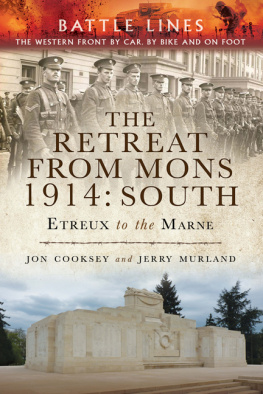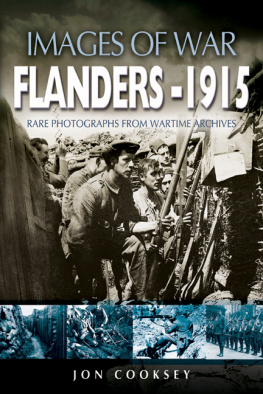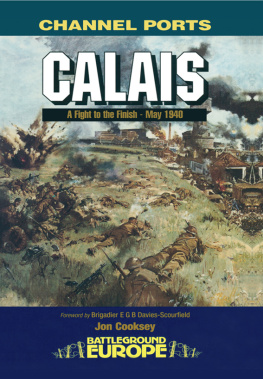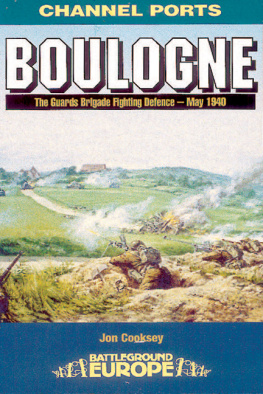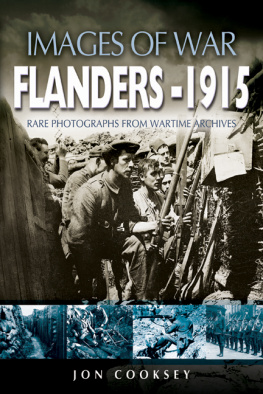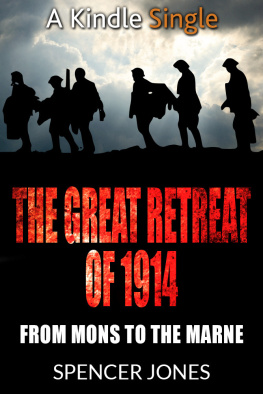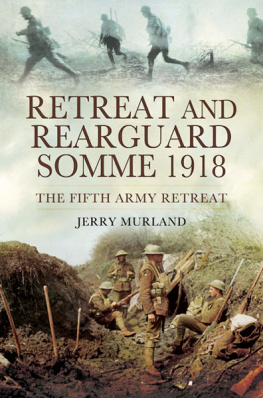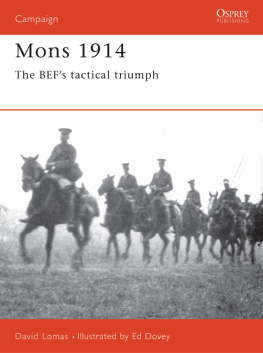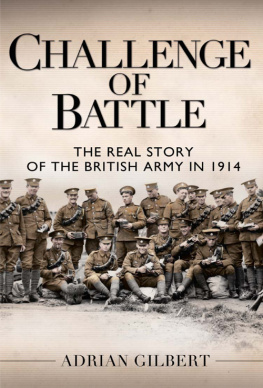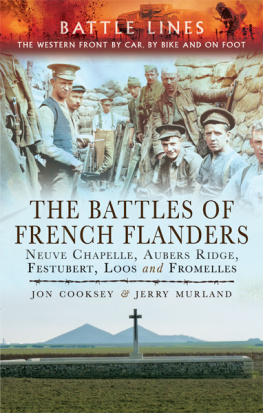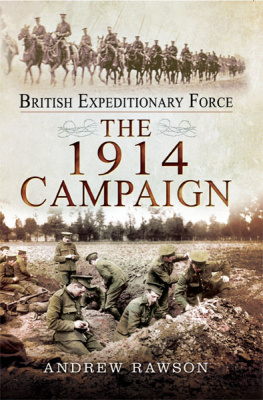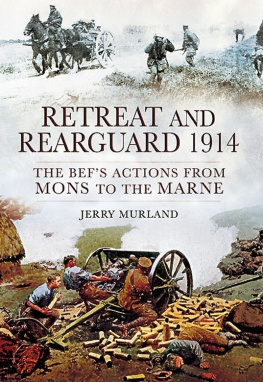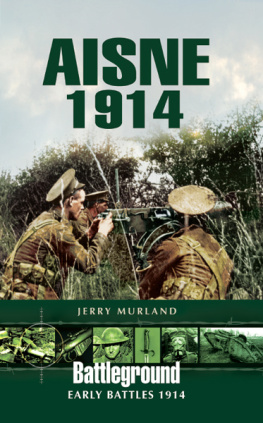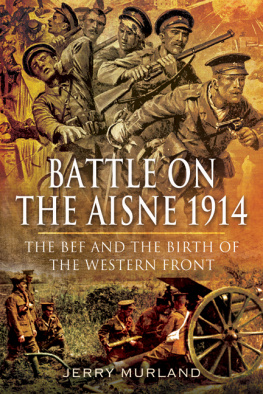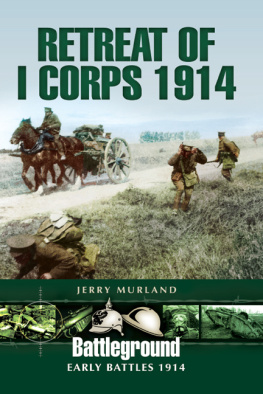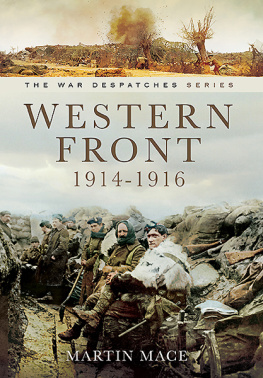
The Cecil Memorial in the Fort Domaniale de Retz .

First published in Great Britain in 2014 by
PEN & SWORD MILITARY
an imprint of
Pen & Sword Books Ltd
47 Church Street
Barnsley
South Yorkshire
S70 2AS
Copyright Jon Cooksey and Jerry Murland, 2014
ISBN 978 1 47382 336 5
eISBN 9781473840768
The right of Jon Cooksey and Jerry Murland to be identified as Authors of the Work has been asserted by them in accordance with the Copyright, Designs and Patents Act 1988.
A CIP catalogue record for this book is
available from the British Library.
All rights reserved. No part of this book may be reproduced or transmitted in any form or by any means, electronic or mechanical including photocopying, recording or by any information storage and retrieval system, without permission from the Publisher in writing.
Typeset in Palatino and Optima by
CHIC GRAPHICS
Printed and bound in India by
Replika
Pen & Sword Books Ltd incorporates the imprints of Pen & Sword Archaeology, Atlas, Aviation, Battleground, Discovery, Family History, History, Maritime, Military, Naval, Politics, Railways, Select, Social History, Transport, True Crime, and Claymore Press, Frontline Books, Leo Cooper, Praetorian Press, Remember When, Seaforth Publishing and Wharncliffe.
For a complete list of Pen & Sword titles please contact
PEN & SWORD BOOKS LTD
47 Church Street, Barnsley, South Yorkshire, S70 2AS, England
E-mail: enquiries@pen-and-sword.co.uk
Website: www.pen-and-sword.co.uk
CONTENTS
INTRODUCTION AND ACKNOWLEDGEMENTS
This guide the second of two companion volumes follows the route of the southern half of the fighting retreat of the British Expeditionary Force (BEF) over a distance of some 322km/200 miles from Mons in Belgium in August and September 1914 to points south of the River Marne in neighbouring France. The retreat from Mons lasted for thirteen exhausting days and despite the fact that, at the time of writing, it took place a hundred years ago; the landscape that witnessed the innumerable clashes between the British rearguards and the pursuing German Army has changed very little. Hailed as a magnificent feat of arms, it was a retreat from which the British emerged by the skin of their teeth. Today this historic route is marked only by the numerous small CWGC cemeteries and memorials which bear witness to the daily struggle between life and death during one of the longest retreats in the history of the British Army.
As with our previous guidebooks, this volume focuses on what the battlefields look like today and although you will find very few contemporary Great War photographs, the guide is profusely illustrated with selections from our own collections, many of which have been taken specifically for this book. The guidebook contains five routes which can be walked, biked or driven and which are supplemented by visits to twelve other sites where we describe what took place and why. When designing routes we have tried once again to ensure that vehicles are not left at isolated points, however, please take the usual sensible precautions with an unattended vehicle by not leaving valuables on display but by locking them securely in the boot. Coordinates are provided for the start of each route. On the majority of routes it is possible to cycle and walk, but on some of them cycling is either prohibited or is only possible with a good off-road bike. Where possible we have directed the battlefield tourist onto quiet and little-used minor roads as well as local pathways and cycle tracks but be aware that even on the quietest of rural roads there is always the likelihood of meeting unexpected farm machinery.
The depth of historical information devoted to each stage of the British retreat from Mons has, by necessity, been limited by available space but we have provided enough of an outline around which to develop your understanding of what took place and why. Nevertheless, we have made a number of suggestions for further reading which will widen your appreciation of the events that took place during the retreat. We also point readers in the direction of other useful guidebooks and publications which cover part or all of the retreat.
What is often confusing to the first-time battlefield tourist is the terminology used in describing the ranks and organization of the various armies of the Great War. In this volume we have provided a quick guide to the organization of the British Army in 1914 together with a comparison of the respective ranks of both armies. In acknowledging the assistance of others we must thank Hedley Malloch for his sage guidance with the route concerning Iron along with the photograph of the Iron Memorial inauguration and Yvon Debuire at Nry for his assistance with the L Battery material. We also extend our appreciation to Sebastian Laudan for his enormous efforts in translating German unit histories and his boundless enthusiasm while touring the ground with us.
A NOTE ON THE BRITISH ARMY OF 1914
The British Army that went to war in August 1914 was made up of entirely professional soldiers. It was the result of the reorganization undertaken after the embarrassment of the Boer War of 18991901 when the British Army was found wanting in the face of the irregular tactics of its Boer adversaries. In 1907 Richard Burton Haldane, the Secretary of State for War in the Liberal Cabinet of Sir Henry Campbell-Bannerman, began the task of reshaping the army to provide the Empire with a small but effective professional force which could both police the Empire and provide home security. While the army in the outposts of Empire was kept up to full strength by a regular flow of men from home bases, the home army was generally well below fighting strength.
An essential part of Haldanes reforms was the creation of the BEF consisting of six divisions, the ranks of which could be filled by the creation of a reserve men whose time with the colours had expired but were contracted to remain available for call-up should a national emergency arise. Thus the army that left British shores to fight on the mainland of Europe for the first time since Waterloo relied heavily on reservists to bring it up to war strength. These men were supplemented by men of the Special Reserve, similar in many ways to the part-time soldiers of the Territorial Force which existed for home defence, in that they were essentially civilians who undertook regular periods of military training. But unlike the Territorials, they were liable for overseas service. It is estimated that 60 per cent of the BEFs manpower came from its reservists and it was these men who suffered the most due to problems arising from their lack of military fitness on the long march from Mons. However, they proved on numerous occasions that they had not forgotten how to soldier. It was their professionalism and tenacity that won them the accolade The Old Contemptibles as they fought their way back from the Marne to the Aisne and then onto Ypres where they joined the 7th Division to fight the First Battle of Ypres in October 1914.

The Irish Guards outside Wellington Barracks on mobilization .

